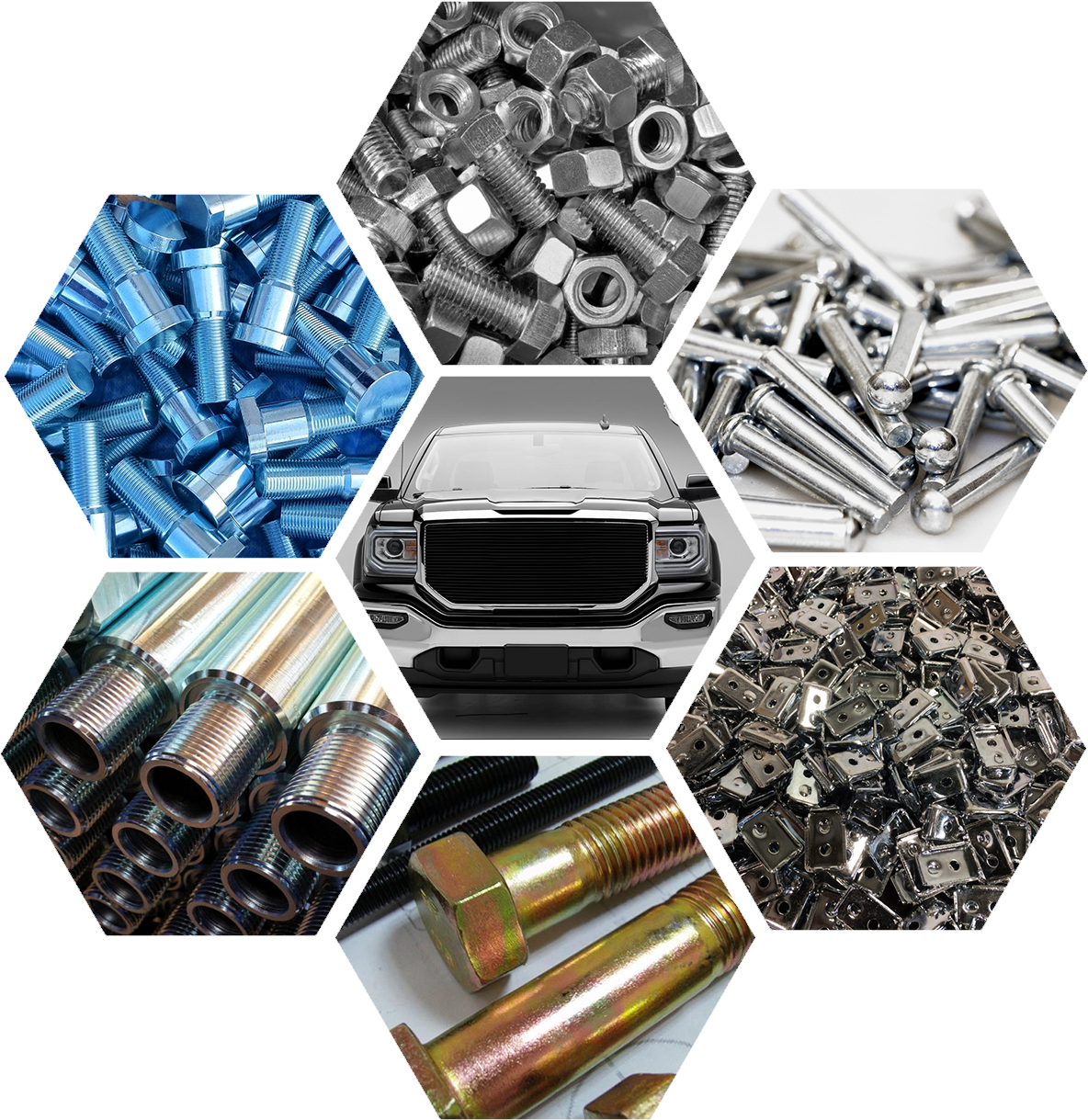Zinc Electroplating provides corrosion resistance to the steel fastener by acting as a barrier and sacrificial coating. Zinc is more electrochemically reactive than steel, so when exposed to a corrosive environment, the zinc plating corrodes sacrificially, delaying rust formation on the fastener even after portions of bare steel are exposed.
Zinc electroplating is a method of depositing zinc metal on the surface of another metal, such as steel, by immersing the fasteners in an appropriate plating bath and applying electrical current. Zinc travels through the electrolytic bath from the zinc anodes and attaches to the surface of the fastener. The thickness of zinc plating depends on the time spent in the plating bath, the amount of current, and the chemical composition of the bath.

ASTM F1941, the “Standard Specification for Electrodeposited Coatings on Threaded Fasteners (Unified Inch Screw Threads (UN/UNR))”; and ASTM F1941M, “Standard Specification for Electrodeposited Coatings on Threaded Fasteners [Metric]” are the preferred standards to use when specifying zinc electroplating on fasteners. ASTM F1941 and F1941M also cover Cadmium, Zinc-Iron, Zinc-Nickel and Zinc-Cobalt electrodeposited coatings not covered in B633. The standards include information on zinc thickness, chromate coatings, salt spray performance and other quality requirements.
When zinc corrodes, it develops a white powdery product on the surface, analogous to and just prior to the appearance of red rust on steel. To delay the appearance of this “white rust” on zinc plating, a chromate surface treatment is applied. This chromate film seals the surface to increase the corrosion protection of the zinc. The chromate coating can provide a range of appearances, as detailed in the tables above, with generally increasing corrosion protection from clear to black. The corrosion protection of zinc/chromate plating can be measured by salt spray hours. Salt Spray corrosion testing (per ASTM B117) is done in a controlled test chamber at 95°F with continuous exposure to an atomized fog of salt solution. Salt spray test results provide a method of comparison testing of coatings in a controlled environment, but may not directly predict corrosion protection in real world conditions. Consult the standards for specific minimum salt spray testing requirements for the finish thickness and supplementary chromate conversion coating specified or contact KYNA Technical Support Personnel for more information.
During the acid cleaning and in the electroplating process, atomic hydrogen can be absorbed through the surface of the fastener. The electroplated coating traps the hydrogen inside the fasteners unless they are baked soon after plating to drive the hydrogen out. If the hydrogen remains in the steel, it can migrate to areas of high stress and cause small microcracks, which rapidly enlarge under load causing a brittle failure. Both standards recommend hydrogen embrittlement relief baking for fasteners above HRC 40 maximum hardness levels. We know high strength, high hardness parts are more susceptible to hydrogen embrittlement, therefore, KYNA Fastener bakes all Grade 8 cap screws and metric property class 10.9 electroplated fasteners to reduce the chance of hydrogen embrittlement from occurring, before reaching hardness levels requiring baking by the standards.
KYNA offers a 0.0002” minimum thickness of zinc (Fe/Zn 5) on our electroplated fasteners. While a heavier zinc plating thickness can provide improved corrosion protection, potential interference with thread fit-ups can result from the build-up of plating on the threads. The geometry of a 60° thread results in a change to the pitch diameter equal to four to six times the plating thickness due to irregularities in plating uniformity. Fine pitch and smaller diameter fasteners tend to be less forgiving than coarse pitch and larger diameter products, so please consult KYNA Technical Support Personnel before specifying plating thicknesses greater than .0003”, to avoid needing special thread tolerances during manufacturing to allow for the increased thickness of the plating.
So regardless if you want your fastener finish to just look outstanding; or if you want it to perform outstandingly; let KYNA and our Team of Finish Professionals recommend the right finish for your fastener application today!We assure you the most competitive quote in the fastener industriess
Copyright © 2019 KYNA INDUSTRIES All rights reserved
Powered by Netleaf Software